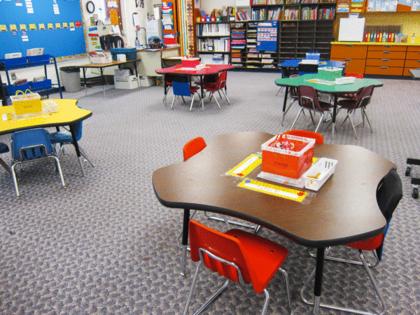The Kid Whisperer: How to maximize positive attention in a kindergarten classroom
Published in Lifestyles
Dear Kid Whisperer,
I have a kindergarten student who is very intelligent but can’t stay seated or silent for more than 10 seconds. This is not an exaggeration! With a class of 20, this creates constant chaos. How can I help her AND utilize what I’ve learned from your trainings?
Answer: As a former longtime primary school teacher who is married to a former longtime primary school teacher, I feel your pain! Chronic squirreliness among small people can ruin the day of even well-meaning and well-prepared teachers.
First the obligatory disclaimer: Kids can and often should be evaluated for any host of issues that may be present. Of course this is true. What is also true is that behaviors that cause problems in the classroom usually are present for a more simple reason: In the past, these behaviors have gotten kids what they wanted.
Here is how to save your sanity and teach the positive behaviors necessary for this student to integrate herself into the peer group and have the best chance at a happy, healthy school experience.
First, you and pretty much all kindergarten teachers already know to make instruction developmentally appropriate, and not to have kids sitting and stationary for too long.
That’s right about where most advice for kindergarten teachers ends: with stuff kindergarten teachers already know.
Here’s the next level. Create what will be, for a vast majority of kids of any age, a brand-new environment: one in which kids’ positive behaviors get them more attention than their negative behaviors.
Of course there is an inherent problem here. Negative behaviors (like getting up from your chair and running around every five seconds) get kids attention, and thereby a feeling of control, more often than positive behaviors because negative behaviors prompt us to notice them, and positive behaviors rarely do.
Think about it: In your classroom, when your squirrely gal bolts out of her seat, if you tell her to sit down, you are not only giving her the attention and thereby control over you that she desires. You are also probably ignoring the positive behaviors of, on a good day, 20 other 5-year-olds. These behaviors may include sitting, working hard, being kind and having the proper voice level. This reinforces the bolting out of seats for your bolter, and for everyone else.
So, how do you solve this problem? The answer is to use Strategic Noticing quickly and often to teach and reinforce positive behaviors, and to use Gentle Guidance Interventions to guide kids away from minor negative behaviors while minimizing the giving of attention and control. Squirrely Kid will be seated at the beginning of this scenario.
Kid Whisperer (positioning himself right next to Squirrely Kid, where Kid Whisperer will spend at least 25% of his time for the next few weeks. Kid Whisperer never moves more than a few feet from Squirrely Kid during this scenario.)
Kid Whisperer: I noticed Squirrely Kid is seated. I noticed Kid #7 is working hard at his seat. I noticed Kid #21 is seated silently. I noticed Kid #10 is coloring all of the blue objects blue.
Squirrely Kid starts to get up to explore the shiny object in her peripheral vision.
Kid Whisperer: Ope. (Kid Whisperer gently puts his hand on Squirrely Kid’s shoulder): Where should you be? You know what to do.
Squirrely Kid sits.
Kid Whisperer: I noticed you are seated.
Squirrely Kid starts working for approximately .0072 seconds and then looks like she’s thinking of a cowboy fighting a polar bear. Kid Whisperer taps her work while looking away. Squirrely Kid starts working again.
Kid Whisperer: I noticed that you are using the blue crayon! Hey, feel free to sit and do your work or stand and do your work as long as you are at your desk. I noticed the entire Hornets Team is coloring the blue pictures blue!
See how I worked a choice in there, too? By using Strategic Noticing and Gentle Guidance Interventions, I can maximize attention for positive behaviors, minimize attention for negative behaviors, avoid publicly embarrassing kids for their mistakes, and refocus myself on all of the positive things that are happening in the classroom instead of fixating on the few negative ones!
©2024 Tribune Content Agency, LLC.
























Comments